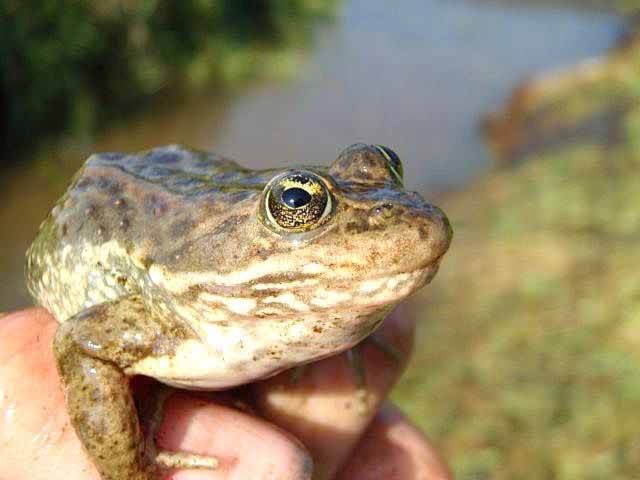A spotted, bulgy-eyed, five to ten centimetre-big amphibian has put Agassiz on the endangered species map for years, and last month it made news again when hundreds of squirmy tadpoles were released in a slough close to Seabird Island.
For longtime locals, news of the Oregon spotted frog is nothing new. Large populations of the green, brown and red critter have called Agassiz home for ages, with some of the largest numbers surviving in the area and much of the recovery efforts centred around interior B.C. since habitat loss, pollution, disease, and the introduction of non-native species like the bullfrog and the reed canary grass resulted in the frog becoming the most endangered amphibian in Canada.
RELATED: Oregon spotted frog hunting in the Fraser Valley over spring break
Back in the early 1900s, the frogs’s population numbered in the hundreds of thousands from the Fraser Valley down into Northern California, but the B.C. population has since declined as much as 90 per cent, and the species has become locally extinct in California and endangered in Oregon.
MT @cbcnewsbc: Vancouver Aquarium trying to help one of most endangered amphibians in Canada http://t.co/wjHLfvMg4j pic.twitter.com/JPQL3t4jTq
— Vancouver Aquarium (@vancouveraqua) April 28, 2015
But all is not lost for the floodplain wetland-loving animal.
In Vancouver, the Oregon spotted frog recovery team coordinates efforts to conserve, manage and recover the frog in Canada.
Since 2007, the the Vancouver Aquarium has collected Oregon spotted frog eggs to establish an “insurance population.”
“If the wild population completely crashed and we lost them all, we still have…a genetically viable population of the frogs here on site at the aquarium,” said Vancouver Aquarium’s senior biologist Darren Smy.
“We don’t want to leave them especially since this is kind of our own fault,” he said of the frog’s population decline. “They’re an important part of the ecosystem. They’re eating a lot of bugs and things like that…[and] the tadpoles help to keep waterways clear and clean by feeding on the algae.”
Smy describes the spotted frogs as ‘canary in the coal mine’ amphibians because they soak in moisture through their skin.
“They take drinks through their skin, so everything they soak up can effect them,” he said. “They’re a good indicator of what’s happening in the environment.”
And the Vancouver Aquarium has taken the task of breeding the ‘coal mine canary’ amphibians very seriously. By 2010 the aquarium had become known as the world pioneer in breeding Oregon spotted frogs for human care, and since then it has produced 20,000 more tadpoles.
PHOTOS: Endangered frogs leap to their new home near Seabird Island
But what does all that have to do with Agassiz?
Recovery efforts continued last month – albeit later than usual thanks to a colder, longer winter – when the Vancouver Aquarium transferred almost 1,000 tadpoles to the Fraser Valley on May 17. At least 580 of the tadpoles were released into a restored wetland off the Fraser River near Seabird Island, and 320 tadpoles were transported to the Greater Vancouver Zoo so they can continue to grow before being released into the wild this fall.
Coincidentally, the juvenile amphibians were released on the eve of Endangered Species Day – a day of action and education on endangered species – of which there are approximately 750 in Canada and over 16,000 internationally, according to the International Union for Conservation of Nature’s (IUCN) endangered list.
There are signs of hope for the frog, according to Smy.
Environmental DNA has been found in collected water samples, along with egg masses and juvenile frogs believed to have been bred in the wild.
“They have found animals from previous years surviving which is a good sign,” said Smy. “Their habitats go kind of untouched in these more isolated areas.”
“As they find more evidence in the area they can do more through surveys of the population.”
So far, Agassiz has been a nurturing home for a frog integral to the land now saving it.
